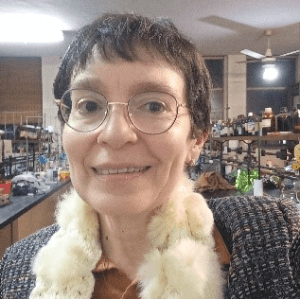Title : Design and synthesis of nitrogen heterocycles with antileishmanial activity: From natural products inspiration to 2D/3D QSAR models
Abstract:
Leishmaniasis is a neglected vector-transmitted tropical disease caused by a protozoan parasites species of the genus Leishmania, where the three principal clinical manifestations are cutaneous leishmaniasis (CL), mucocutaneous leishmaniasis (MCL), and visceral leishmaniasis (VL). Known also as kala-azar, VL is fatal if left untreated in most cases. CL is the most common form of leishmaniasis and causes skin lesions, mainly ulcers, on exposed parts of the body, whereas MCL leads to the partial or total destruction of mucous membrane tissues. About 95% of CL/MCL cases occur in the Americas, the Mediterranean Basin, the Middle East, and Central Asia, with annually estimated 700 000 to 1 million new cases worldwide. The pharmacological treatment for leishmaniasis is limited, relying primarily on pentavalent antimonials, amphotericin B (under deoxycholate or liposomal formulations), and miltefosine. Additionally, these chemotherapeutic options are mostly unsatisfactory due to low efficacy, poor safety, the emergence of parasite resistance, among other factors related to treatment that are unsuitable for the socioeconomic reality of affected populations. Leishmaniasis chemotherapy has been historically associated with natural products, such as amphotericin B extracted from the filamentous bacteria Streptomyces nodosus, and paromomycin obtained from Streptomyces rimosus. Moreover, reports identifying natural products with antileishmanial activity are always frequent. A series of 2-substituted quinolines isolated from Galipea longiflora K. Krause (family Rutaceae), a Bolivian tree traditionally used to cure ulcerations of CL by the native Chimanes tribe, was first reported by Fournet et al. Pure quinoline alkaloids, such as 2-n-propylquinoline, 2-n-pentylquinoline, 4-methoxy-2-phenylquinoline, and 2-(3,4-methylenedioxyphenyl-ethyl)-quinoline, demonstrated promising activity against Leishmania donovani (species related to VL) in vitro, and activity by oral route in the in vivo evaluation. This discovery encouraged us to develop C2-substituted quinolines as antileishmanial agents. In addition to their recognized activity as antimalarials, many synthetic quinoline derivatives are antibacterial, antifungal, antitumor, and antimycobacterial agents. We have previously reported the microwave-assisted synthesis of substituted 2-phenylquinoline-4-carboxylic acids and poly-substituted quinolines, which exhibited antiparasitic activities. Among them, four derivatives with moderate activity against L. (Leishmania) infantum chagasi and L. donovani were found. Furthermore, we have investigated the influence of the vinyl-bridge insertion between the 2-aryl ring and the quinoline core on the antileishmanial activity. Two derivatives possessing a 2-chloro or 4-chlorostyryl moiety, respectively, were considered the most promising antileishmanial agents due to the parasite killing effect in intracellular forms inside infected macrophages. In addition, it was demonstrated that certain chalcones can inhibit the growth of Leishmania spp., such as the natural compound licochalcone and the synthetic derivative (E)-3-(3-nitrophenyl)-1-(2,4,6-trimethoxyphenyl)prop-2-en-1-one. In this context, we have developed two computational models based on three-dimensional quantitative structure-activity (3D-QSAR) using Comparative Molecular Similarity Index Analysis (CoMSIA) and two-dimensional quantitative structure-activity (2D-QSAR). Thus, a new series of twelve quinoline-chalcone hybrids was designed and synthesized, and the products were further evaluated against L. (L.) amazonensis to validate the model. Four compounds resulted active with IC50 values less than 2.61 M. These results suggest that the calculated models could be used for the rational design of new inhibitors with antileishmanial activity.




